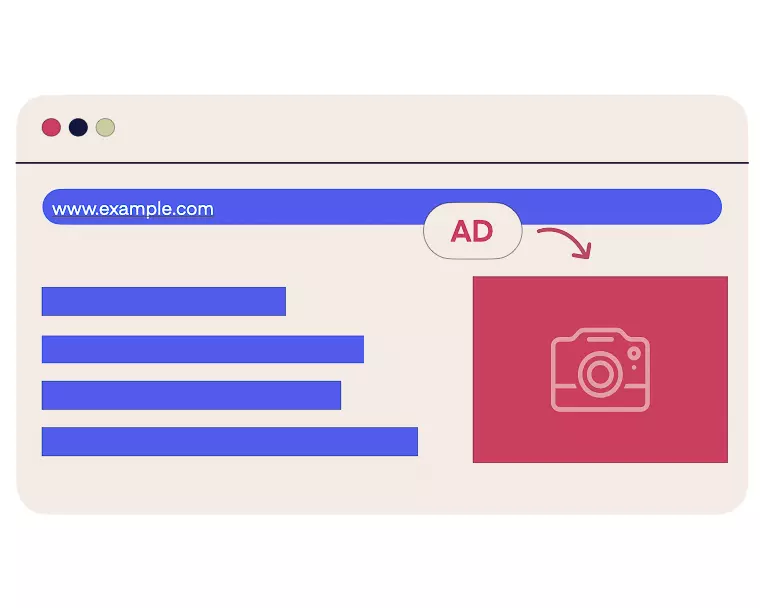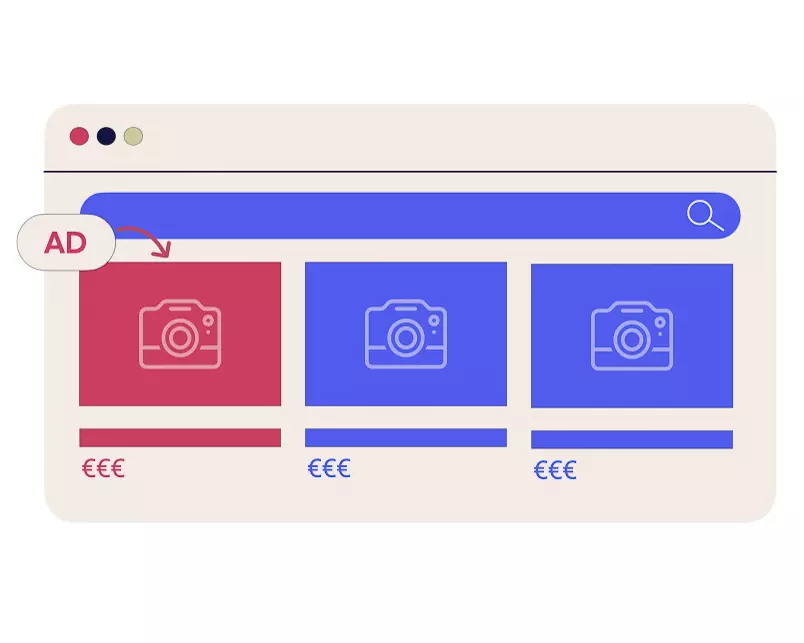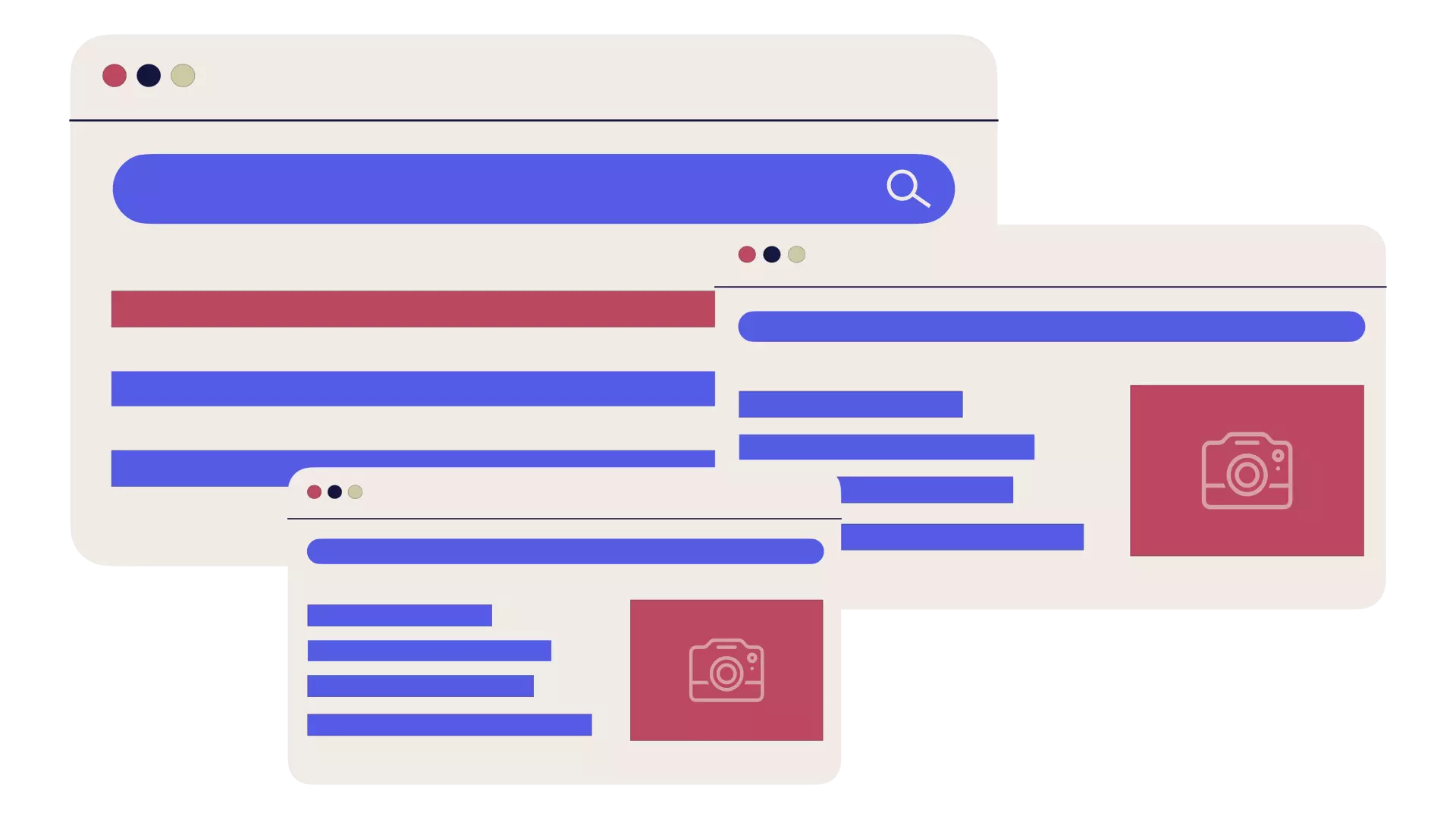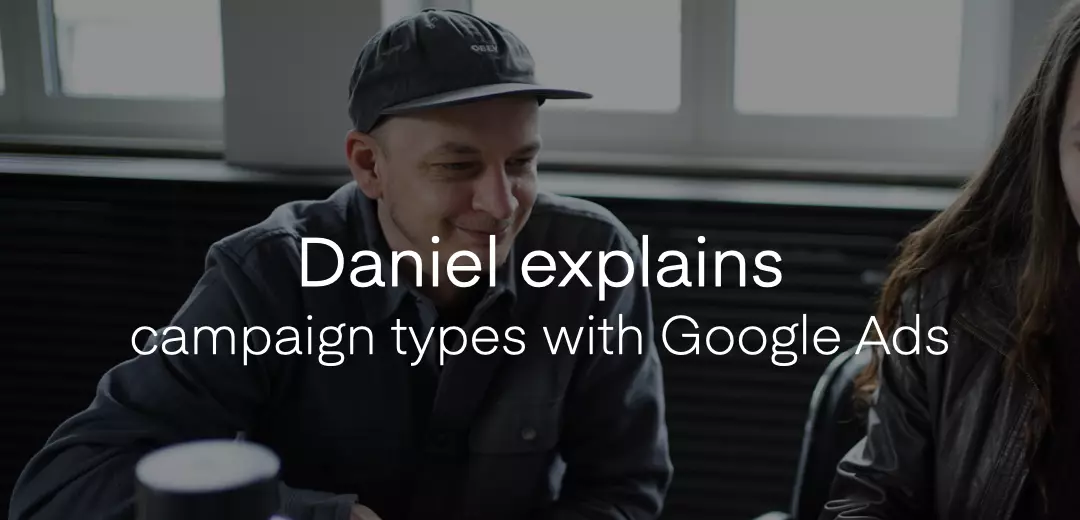Daniel explains -
Campaign types with Google Ads
In the first blog post of "Daniel explains", we explained the basics of search engine advertising (SEA) and why SEA is so important for companies and what benefits it offers.
In the second part of the "Daniel explains" series, we take a closer look at the topic of SEA and show which campaign types there are with Google Ads, what they are suitable for and what advantages they each have.
You can find the video to accompany this blog post here:
What are campaign types?
Campaign types are different strategies or approaches for placing targeted advertising on the various Google platforms. Each campaign type has its own characteristics, advantages and possible applications, depending on a company's goals and requirements.
In this blog post, we explain the five most important campaign types.

Search campaigns
Search campaigns are one of the most popular forms of Google Ads. They place ads directly in Google's search results, as well as on websites of Google partners in the search network.
This method is known as pull marketing , as users already have a specific need and are looking for targeted solutions. The task is to draw attention to a specific offer and convince users of its benefits.
A successful search campaign requires suitable keywords and well-formulated ad texts. Another advantage of search campaigns is full cost control, as costs are only incurred when an ad is actually clicked on.

Display campaigns
Display campaigns enable the placement of ads on other websites in the Google Display Network. Visual advertising media such as banners, videos or animations can be used here to attract the attention of the target group.
These campaigns are particularly effective when companies want to increase awareness of their brand or products. As the placement takes place on different websites, a diverse set of creative elements is necessary to present the advertising message in a uniform and optimal way.
Google supports this by providing responsive ads that can contain different titles, descriptions and images. The Google algorithm then automatically selects the most effective combination of these elements for the ad placement. Compared to search campaigns, display campaigns often have a greater reach and usually offer more favorable click prices.
However, potential customers are also at an earlier stage of the customer journey. This is referred to as classic push marketing, as the aim is to arouse consumer interest and create needs.

Shopping campaigns
For store operators, shopping campaigns are an important part of their SEA strategy. They make it possible to present products with images, prices and other details such as shipping information directly in Google search results.
Let's take the example of a company that specializes in the sale of special adhesive tapes. When someone searches for "buy high performance adhesive tape" on the internet, visually appealing shopping campaigns can ensure that the company's products immediately catch the eye.
This draws potential customers' attention directly to the online store, where they receive further product information and are encouraged to make a purchase.
Shopping campaigns also offer a good opportunity to increase the visibility of products and stand out from the competition.

Video campaigns
Video campaigns make it possible to place video ads on YouTube and in the Google Display Network. Videos can create an emotional connection to the target group.
Various ad formats are available: Skippable in-stream ads, which run before, during or after other videos on YouTube, and bumper ads, which are only six seconds long and cannot be skipped, are used to convey the brand message in a concise and eye-catching way.
For video campaigns to be successful, it is crucial to create creative and professionally produced content that not only appeals specifically to the target group, but also captures their interest. The authenticity of the content plays a central role and should be supported by convincing storytelling and clear unique selling points (USPs) of the products or services.

Performance Max campaigns
Finally, the Performance Max campaign should be highlighted - the latest addition to Google's offering. This type of campaign offers the opportunity to use the entire range of Google Ads platforms with a single campaign.
This includes ad placements on YouTube, the Display Network, Google Search, Gmail and Maps. Performance Max campaigns aim to fully exploit conversion potential and increase advertising efficiency.
They are particularly suitable for companies that want to get the most out of their advertising opportunities and maximize the reach of their campaigns. Thanks to their advanced focus, Performance Max campaigns enable targeted tracking of marketing objectives and an increase in visibility.
In summary, it can be said that each type of campaign has different advantages. The right choice therefore depends on the marketing strategy, the objectives and the time available.
If you want to learn more about specific campaign types or need help running your own campaigns, you can always contact us.
To make sure you don't miss any of our blog posts and videos, you can follow us on our social media channels.
All posts in the knowledge formats "Tobi explains" and "Daniel explains"can be found here:
